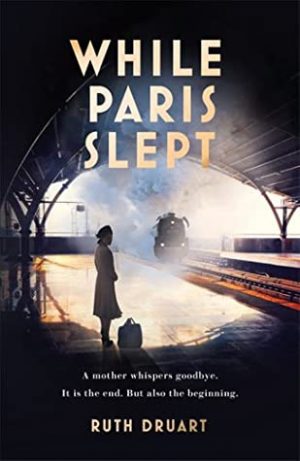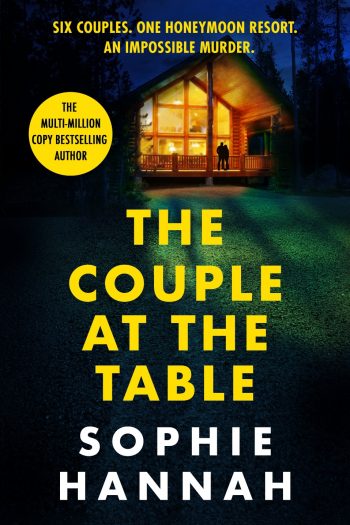
Today’s post is by writer and editor Lisa Cooper Ellison.
Most memoir first drafts consist of stories writers have told themselves or everyone else. Some of those tales have great punchlines or stab the reader’s heart so deeply they lose their breath. In the beginning, many of us are convinced our only job is to find the words that make those stories sparkle.
But revision teaches us how malleable the truth is. So much depends not on the events themselves, but on how we perceive them. Letting go of capital T “Truth,” we create draft after draft, hoping to at least create something authentic, and maybe beautiful.
Anxieties often spike during this messy middle part of the revision process. One way to calm them—and maybe even have some fun—is to stop searching for The One Perfect Structure and instead spend a few drafts playing around. Experimenting with different forms can teach you important skills and give you the mental flexibility needed to build your narrative arc.
Best of all, it’s possible to do this without hacking your project to pieces—that is, unless you want to.
1. Story draft
Memoirs might deal with true events, but they’re closely aligned with fiction. In a story draft, you’ll learn how to employ the elements of storytelling by crafting well-written, engaging scenes that use dialogue, sensory details, and action to bring your story to life. As you string scenes together, you’ll learn how to manage pacing and time.
If you’re a new writer, one of the best ways to learn these skills is to apply a linear, three-act structure to your manuscript. Using this structure as a starting point can teach you how stories work and what’s required to turn your very interesting circumstances into a great book, no matter what structure you ultimately decide on.
To do this without breaking your manuscript, consider writing the key “beat” scenes for your memoir, something Suzette Mullen advocates for in Why Preparing a TED Talk Makes You a Better Memoirist.
2. Letter or epistolary draft
Perhaps you’ll finish a story draft and decide that’s all you need to explore. But if the voice is drab, you’re still not sure what your story is about, or you haven’t identified your audience, consider writing at least a portion of your book in letter form.
Epistolary memoirs are written as one, or a series, of letters addressed to a specific person. This structure has a long history in the world of fiction, and includes novels like The Color Purple, Dracula, and Frankenstein. Ta-Nehisi Coates Between the World and Me and Mary Karr’s Lit are two well-known epistolary memoirs addressed to their sons.
Letters are intimate. They take you inside a special relationship. Choosing to write your memoir as a letter to a singular audience can help you hone your voice and decide which scenes truly belong. You can also use this draft to understand your characters.
Gayle Brandeis’s braided memoir, The Art of Misdiagnosis: Surviving My Mother’s Suicide, explores the tangled web of her grief, her mother’s mental illness, and the ways illness and mental illness intersect within this mother/daughter relationship. Gayle’s earliest draft was a straight-forward grief narrative that dealt solely with the aftermath of her mother’s death. But as she began to explore the deeper aspects of her story, she decided to write a draft as a letter to her dead mother. After completing it, she realized her mother needed to have a voice in her memoir. This gave rise to the second arc around her mother’s unfinished documentary, The Art of Misdiagnosis, and the third arc around illness that twines the two women together.
During an interview for the Writing Your Resilience podcast, Laura Davis, author of The Burning Light of Two Stars, talked about how her use of letters evolved over several drafts and why she kept excerpts from certain ones in her published memoir.
To see if this is a good fit, write a single letter to a key character in your memoir, a younger version of yourself, or the reader who most needs your book, and see what you discover. If this work energizes you, consider writing a chunk of your book in this format.
3. Essay draft
Essays provide you with an opportunity to build an argument around your topic that can ultimately lead to platform-building bylines and a leaner, more focused narrative arc. They have also been the impetus for several well-known and acclaimed memoirs. Cheryl Strayed’s essay, The Love of My Life, served as the impetus for her memoir Wild. Debra Gwartney’s 2002 radio essay for This American Life led her to write Live Through This: A Mother’s Memoir of Runaway Daughters. Stephanie Land’s essay for Vox led to her book deal for Maid: Hard Work, Low Pay, and a Mother’s Will to Survive.
Writing an essay draft that convinces readers of something can help sharpen your book’s essential argument and become part of the conversation happening around your topic. But sometimes letters, traditional essays, and story drafts aren’t enough—you may still not understand what you’re writing about. If that’s the case, toy around with a hermit crab or braided essay.
Braids allow you to juxtapose items. Take this Brevity essay, The Once Wife by Heidi Fettig Parton, which threads the death of her husband around a trip she took to Germany before the destruction of the Berlin Wall, or Jo Ann Beard’s The Fourth State of Matter. Even if you decide against a braided structure, juxtaposing scenes or events on note cards can lead to new and interesting connections with your material.
Hermit crab essays impose a structure like a syllabus, rejection letter, or body wash instructions onto your material, which forces you to distill your message. This compression, like coal in a cave, can help you create the diamond-like narrative arc you’re looking for. Your essay could encompass your entire book, or a portion of your material. It could even inspire you to write an experimental book, like the Pushcart-Prize nominated memoir, Places We Left Behind by Jennifer Lang.
However you choose to play, note what works, what feels stilted, and what cracks lightning inside you. Those sparks of inspiration are signals that you’re on the way to creating something that’s not just beautiful but authentic and personally true.
Lisa Cooper Ellison is an author, speaker, trauma-informed writing coach, and host of the Writing Your Resilience podcast. She works and writes at the intersection of storytelling and healing, and uses both her personal experiences and clinical training to help writers turn tough experiences into art. Lisa’s essays and stories have appeared on Risk! and in The New York Times, HuffPost, Hippocampus Literary Magazine, and Kenyon Review Online, among others.






